JavaScript is disabled. For a better experience, please enable JavaScript in your browser before proceeding.
1 - 19 of 19 Posts
1 - 19 of 19 Posts
Top
Troubleshooting an ATV that won’t go into gear or won’t shift gears can be quite complicated, but not always. Whether you can address the issue on your own depends on the severity of the problem and your mechanical skill level.
ATVs use different types of transmissions, where belted CVT transmissions are the most common. The possible causes and the steps required to solve the problem depend on the type of transmission your ATV has.
This post covers some of the most common causes if your ATV doesn’t go into gear. It is meant to guide where to begin your troubleshooting, not as a complete repair guide for all ATV transmissions.
The service manual for your specific brand and model will provide more detailed troubleshooting procedures for your transmission issues.
Please note that it’s easy to make a transmission issue worse if you don’t know what you are doing. Some of the repairs require special tools such as a clutch puller or a clutch disassembly tool. If the repair seems intimidating to you or you do not have the right tools, it is recommended that you take the bike to a dealer technician.
Some of the repairs require special tools such as a clutch puller or a clutch disassembly tool. If the repair seems intimidating to you or you do not have the right tools, it is recommended that you take the bike to a dealer technician.
Page Contents
We recommend that you begin the troubleshooting by testing whether you can shift gears when the engine is not running. This initial test allows you to narrow down the possible culprits of your gear-shifting issue.
If you can shift gears with the engine off, you know that the gear-shifting mechanism, as well as the inside of the gearbox, most likely works fine.
Gear shifting problems that are only present when the engine is running are usually clutch- or belt-related (Step 3) or caused by a high idle (Step 2). You may find that the bike wants to creep or move forward when in gear at idle. But even without creep, the problem may be with one of these components.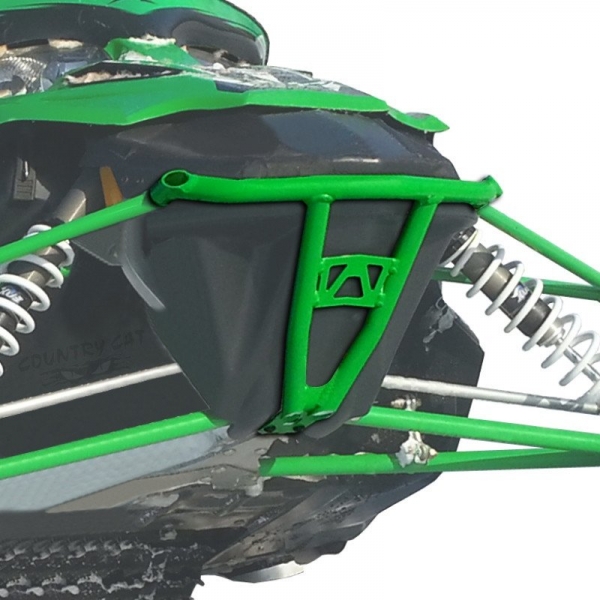
If you are, however, unable to shift gears with the engine off, we recommend you jump straight down to Step 4.
Many ATVs come with an automatic clutch that engages when you apply throttle, and the clutch speeds up. The same principle applies whether you have a wet disc clutch or a dry clutch, as you find on a belted CVT transmission.
If the ATV, for some reason, idles higher than it’s supposed to, it may cause the clutch to engage slightly, putting a small but constant tension to the metal gears inside the gearbox. This pressure on the gears makes the ATV very hard to shift.
Most ATVs should idle around 1100-1200RPM. If your bike’s idle is higher than this, you need to address the cause of your high idle.
For carbureted ATVs, there will be an adjustment screw to set the idle. Your user manual will provide the correct setting for your bike. Adjusting the idle on a fuel-injected ATV is usually a job for a mechanic.
When idling, the primary clutch on a belted CVT transmission is supposed to spin freely without engaging (not pulling on the belt). This relieves the tension on the gearbox and allows you to shift gears.
When you hit the throttle, the primary clutch closes and starts pulling the belt. The belt makes the secondary (driven) clutch spin, which creates tension between the gears inside the gearbox.
This is how a CVT transmission works:
But when the transmission is not tuned correctly or has a mechanical issue, it may be engaging and spinning the secondary clutch even at idle.
To troubleshoot an issue like this, you need to remove the belt cover to inspect the clutches and see how they behave when the engine runs, both at idle and when revving in neutral.
Please note that the clutches will be spinning at high speeds. Keep your hands and all loose objects clear of clutches to avoid potentially fatal damage.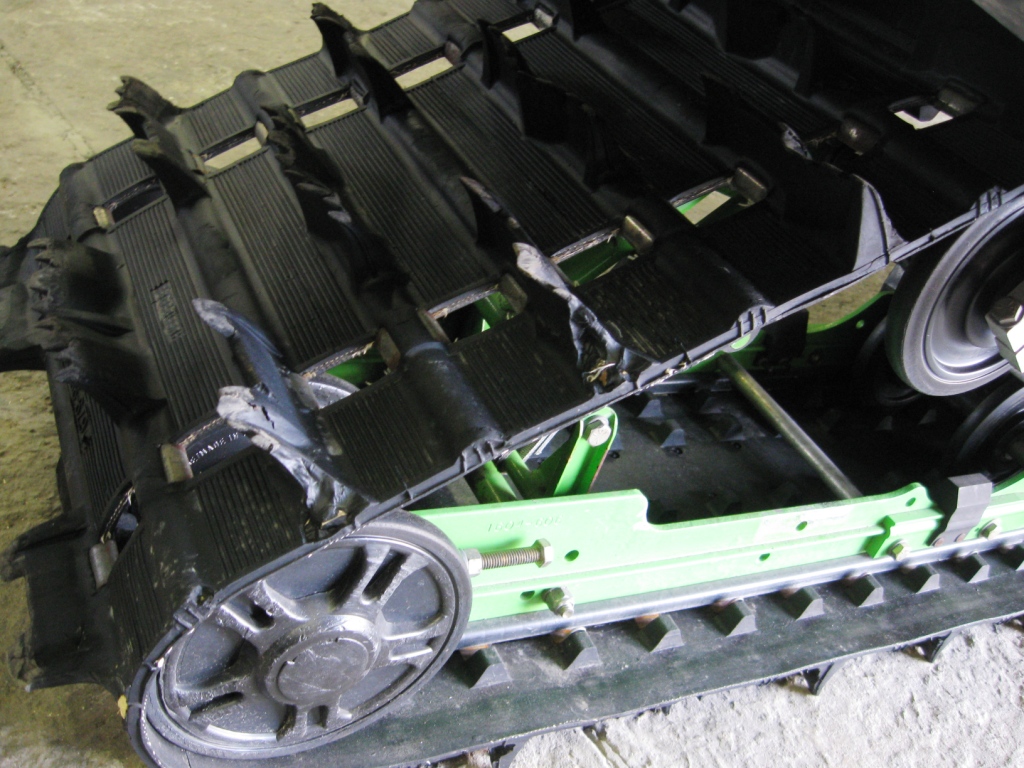
If the primary clutch is packed with dirt, it may bind or not open enough to release the belt. Now is a good time to pull the clutches for proper cleaning and service.
The springs inside a CVT transmission clutch may weaken over time, preventing the clutch from functioning as it is supposed to. Clutch springs are replaceable, but you may need special tools to pull and disassemble the clutch.
If the motor mount is bad or has come loose, the primary clutch may be out of alignment. Use a pry bar to see if you can lift the whole engine. You should barely be able to see the engine move, if at all.
The drive belt should ride in the clutch assembly center, not touching the primary’s two clutch sheaves. If it does rub against one of the sheaves, it will cause unwanted tension on the belt.
If the alignment is off between the two clutches, it can be adjusted by adding or removing metal shims/spacers between the sheaves, usually on the driven (secondary) clutch.
Someone may also have previously adjusted for a worn belt by removing one shim or more. When installing a new belt, you may need to add those spacers back to prevent binding, leading to gear shifting issues.
If the drive belt is worn too much, it will ride low on the sheaves, causing a slight creep.
We recommend that you only use OEM belts. There are aftermarket belts available that offer better performance and longevity at a smaller price. But slight variations in production tolerances can cause issues such as the clutch engaging too soon.
Aftermarket belts also use a harder compound to make them last longer, which may wear your clutch sheaves over time.
Remove the belt cover. If the belt is shredded, it may have gotten wrapped around the driven shaft, causing it to bind up.
If the belt is shredded, it may have gotten wrapped around the driven shaft, causing it to bind up.
Polaris ATVs with EBS (engine brake system) have components that may wear out in time. Inspect the EBS fiber washers (one on each side of the EBS bushing) on the primary clutch to see if they are worn out. If the washers are worn, the belt may not ride in the grooves as it should and instead ride one of the sheaves.
Some ATVs with engine brake systems have a primary clutch with a one-way sprag bearing, a so-called one-way clutch. It is supposed to spin freely in one direction and be locked in the other direction. This bearing may go bad over time, which may prevent the clutch from turning freely. It may be hard to tell if the bearing is ok; just a slight drag may cause shifting issues.
In this case, the problem is likely with the gear changing mechanism or the transmission’s internals. Begin by troubleshooting the externals as they are the most accessible.
Begin by troubleshooting the externals as they are the most accessible.
Some ATVs have adjustable gear linkage. If not adjusted correctly, the bike will not shift as it should.
On ATVs that has manual clutch transmissions, you should make sure that:
To test your gearbox for internal damage without splitting the case you can try this method:
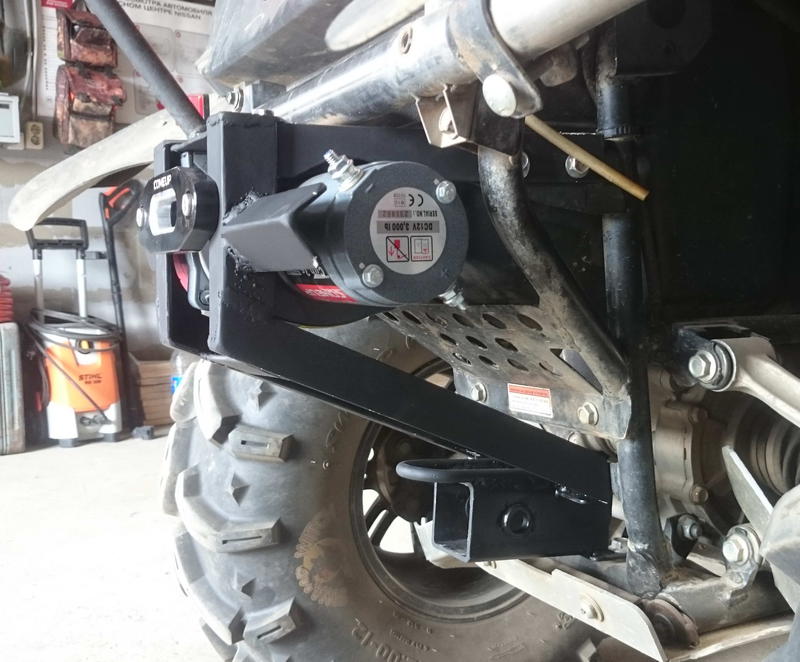
One of the most common issues one could be facing with a gearbox’s internals is having a worn or bent shift fork. The shift fork is what shifts the gears in place. If it is bent or worn, it can’t push the gears completely in place.
Some ATVs use an oil-sump wet clutch in combination with the dry clutches on the CVT belt transmission. You also have some Honda ATVs with hydrostatic transmissions that use oil to drive the ATV forward.
Here are a few things to check out whenever any of these types of ATVs won’t go into or shift gears.
Make sure the oil level is correct or the bike may not shift as it should.
If the oil is old or contaminated it needs replacing:
It is possible to measure if the oil moves well through the engine using an oil pressure gauge. If the pressure is weak, you may have bad seals and need to open the engine.
ATVs with an electric shifter, like the Honda AS models, uses an electric motor to shift through the gears. If the motor does not work, the bike will not shift gears.
If the motor does not work, the bike will not shift gears.
The only way to make it shift is by using the emergency shifter (a short-shifting shaft sticking out the left lower side of the engine, use the supplied gear change tool). If the bike shifts when using the emergency shifter, you need to address the shifter motor.
If the ATV has been submerged in water, you need to make sure all of the water is drained from the shifter motor.
Remove the motor. If the motor does not turn even when hooking it up directly to a battery, it may be burnt out and need replacing.
It is easy to forget that an electric-shift ATV needs electricity to shift. Make sure the battery is properly charged and in good condition.
Make sure the battery is properly charged and in good condition.
Related resources:
How to charge an ATV battery
How to troubleshoot an ATV battery that is not charging.
If you try to shift on an electric shift ATV, you may hear the shift motor moving, but it does not shift completely.
You may find that the problem is worse at colder temperatures. Fixing this issue is relatively easy. All you need to do is replace the old gummed-up grease with all-temperature, white lithium grease.
For the complete procedure, go to Hondaatvforums.net
Located on the carburetor, the Honda ES models have an angle sensor that tends to go bad. After replacing the sensor, make sure it is clocked correctly.
When this happens, there is usually no need to worry. In fact, most ATVs are affected by this issue, some more than others.
In fact, most ATVs are affected by this issue, some more than others.
What happens is that the wheels must be rotated slightly for the gears inside the gearbox to sync (line up).
You may have noticed that this phenomenon gets worse when trying to shift in and out of “park” when standing on a hill.
The best way to avoid this is by applying the parking brake before putting the transmission in “park.” This way, the gears won’t bind up, and you will be able to shift in and out of gear effortlessly.
With the advent of utility caterpillar skis, everyday household tasks in the winter have become much easier. One of the best representatives of its class was the Arctic Cat Bearcat 660 snowmobile, which has high traction, a strong frame, good suspension settings and an economical power unit.
arctic cat bearcat 660
The main features required for a utility snowbike are in this model. The American brand Arctic Cat represents reliable and affordable motor vehicles on the Russian market. Snowmobiles of the bearcat series are a vivid confirmation of this. Many compatriots believe that there is no better snowmobile motorcycle than a “cat”, not in terms of performance and equipment, but also the durability of the components.
The American brand Arctic Cat represents reliable and affordable motor vehicles on the Russian market. Snowmobiles of the bearcat series are a vivid confirmation of this. Many compatriots believe that there is no better snowmobile motorcycle than a “cat”, not in terms of performance and equipment, but also the durability of the components.
• Stability and handling
• Powerful engine
• New suspension types, front AWS VII and Articulating
• Proven component design
• High quality materials and workmanship
Engine arctic cat bearcat 660
The company's designers decided to install a two-stroke 565 cc modified engine with an air-cooled system, producing about 62 horsepower. The fuel supply is provided by a 2xVM34 carburetor, thanks to which the economy and uninterrupted operation of the power unit are achieved.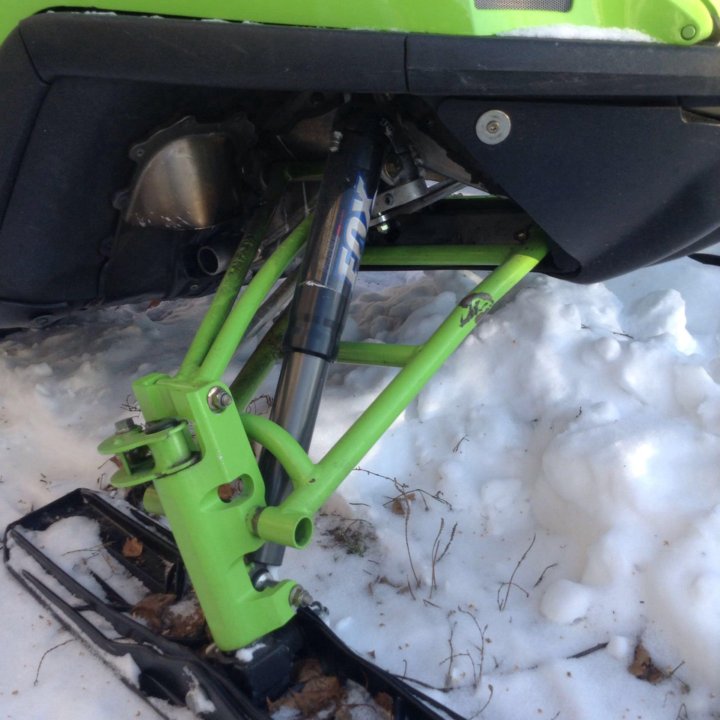 The role of the transmission is performed by the Arctic variator, which is the company's own development. In a pair, two units provide good snowmobile dynamics, endurance and traction. When developing the bear cat, its direct utilitarian and tourist purpose was taken into account, and the engineers found a place for a 65-liter tank. Economical fuel consumption and a sufficiently large supply of it allows you not to think about refueling for a long time.
The role of the transmission is performed by the Arctic variator, which is the company's own development. In a pair, two units provide good snowmobile dynamics, endurance and traction. When developing the bear cat, its direct utilitarian and tourist purpose was taken into account, and the engineers found a place for a 65-liter tank. Economical fuel consumption and a sufficiently large supply of it allows you not to think about refueling for a long time.
Suspension arctic cat bearcat 660
Type AWS VII front suspension with dual hydraulic shock absorbers. This decision made it possible to eliminate vibration when driving on snow cover. At the rear, the ArcticCat Bearcat 660 features Articulating Suspension with Torque Sensing Link for torque control and adjustable torsion bar springs. The ideal combination of comfort and handling of snowmobiles of the described series was achieved precisely by the special design of the running gear.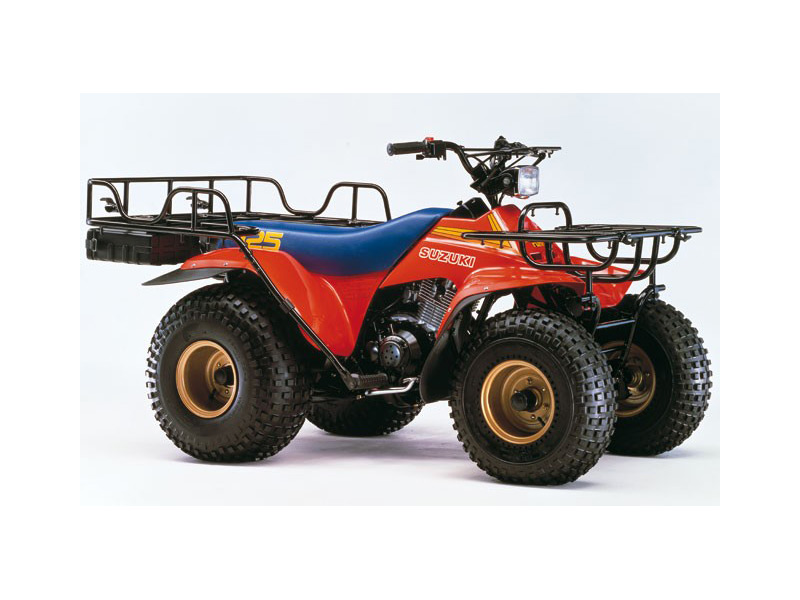
Drive System Arctic Cat Bearcat 660
The ACT DiamondDirectDrive direct drive system minimizes the loss of energy transmitted by the motor. The Arctic roller pulley with a diameter of 264 mm is distinguished by a large margin of safety and an almost unlimited resource. Attention should also be paid to the Bearcat 660 brakes, which the manufacturer can really be proud of. The brake disc on the shaft and the axial cylinder bring the sled to a halt in no time, no matter the elephant or the speed.
Buy Arctic Cat Bearcat 660
Having decided on the model, you need to find a dealer company that can offer not only the best price, but also quality service in the future. In Moscow, it is better to buy an Arctic Cat Bearcat 660 snowmobile in our motor show, which guarantees the proper technical condition of all equipment, payment by any method and delivery throughout Russia. You can always count on the support of our specialists and the provision of spare parts for motor vehicles purchased from us. Choosing a snowmobile of the bear cat series, a person will be able to solve many problems in the economic sphere and be constantly sure that the ArcticCat equipment will not let him down at the wrong time.
Description
BEARCAT 2000 XT ES Specifications
ENGINE
CHASSIS
 reserves the right to change the specification at any time and without any obligation.
reserves the right to change the specification at any time and without any obligation. SUSPENSION
DIMENSIONS
Discount card
There are discount cards in our Mototechnika store.
The discount on the discount card applies to all groups of goods except for sales and equipment.